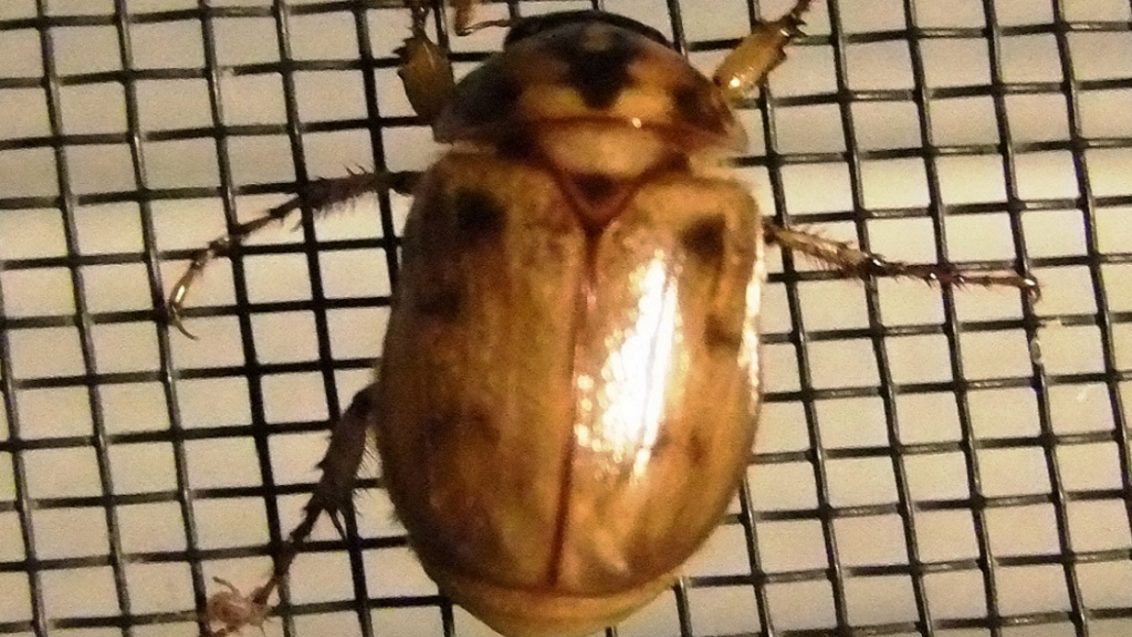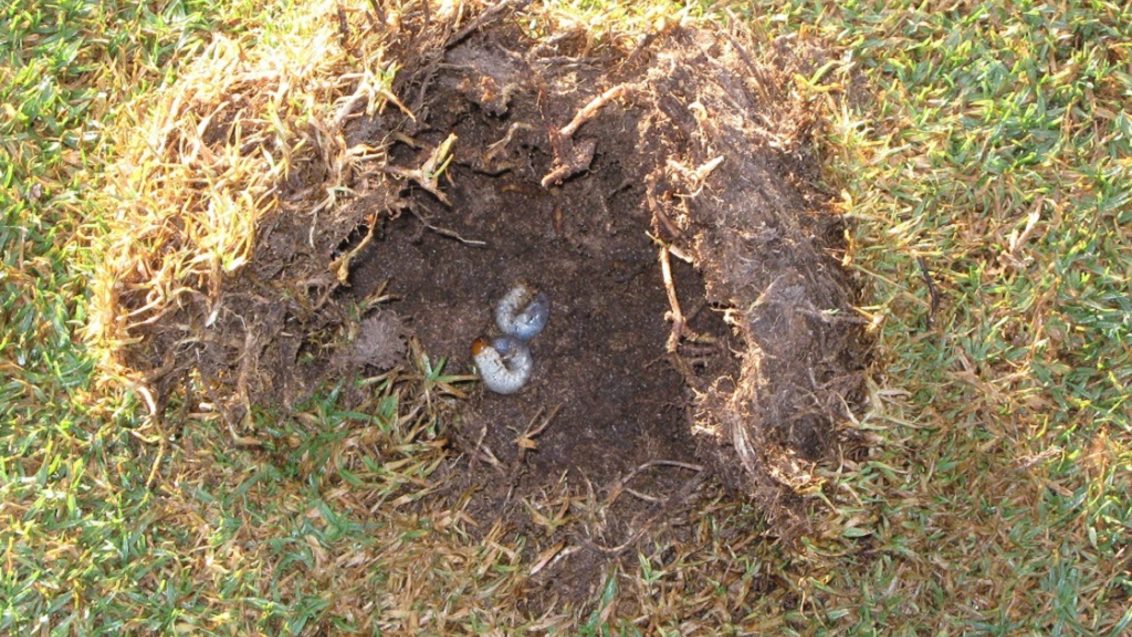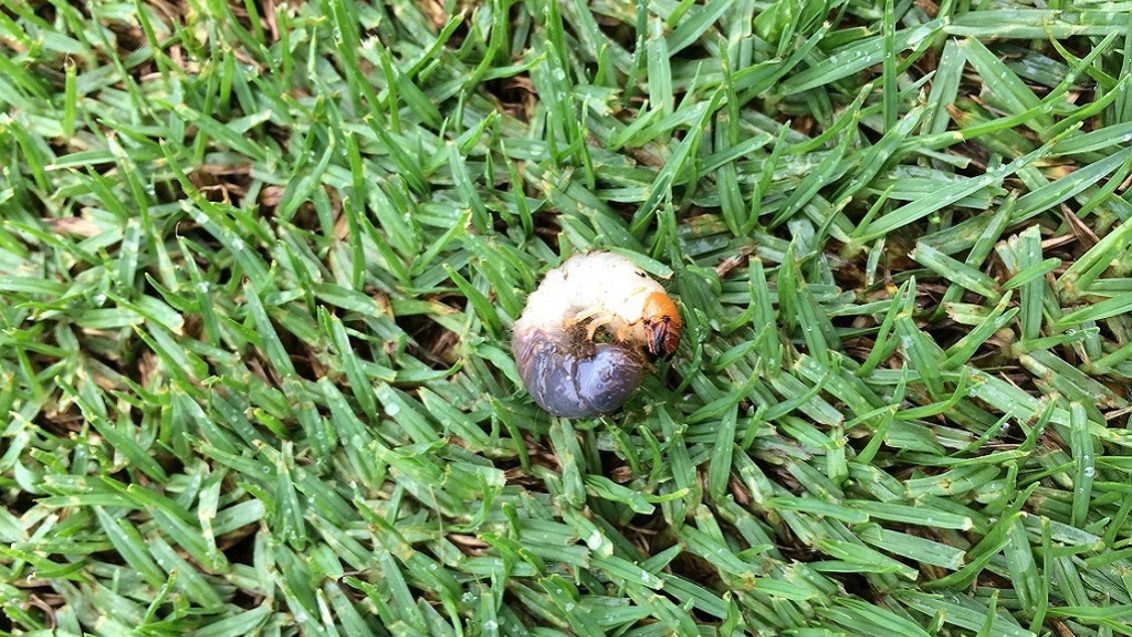Argentinian Scarab
Insect Pest
Identification
The adult beetle is very similar in size and shape to the African Black Beetle but is a mid-tan colour with subtle striping on the hard outer covering of the wing.
Immature or larval stage presents as a white to creamy-white, soft bodied curl grub up to 25 mm long.
Life Cycle
The Argentinian Scarab has a one year lifecycle comprising of 2-4 weeks as eggs, 10-11 months as larvae, 4-5 days as pupae and 1-4 weeks as adults. Adults emerge from the pupal stage at the beginning of summer when soil temperatures begin to warm. After mating, females burrow into soft, moist soils and deposit eggs in the upper soil profile. The peak egg laying period is around late December to early January. The eggs hatch 2-4 weeks later and larvae begin to feed on turf roots. Larvae grow quickly and reach 3rd instar within several weeks. In about May or June the 3rd instar larvae begin to move underground to overwinter within the soil.
Symptoms
Similarly to African Black Beetle, the Argentinian Scarab larvae feed by chewing off turf roots in the shallow soil just below the thatch. Damage is reminiscent of drought stress, as the turf root system becomes compromised and moisture efficiency is lost.
In severe cases, usually towards the end of the season when grubs are 3rd instar, turf can become severely damaged in patches. Often these patches of turf can be rolled back to expose feeding grubs.
Considerations
- Capable of causing damage to turf if present in plague proportions. Several consecutive hot, dry summers will often result in population build up to a point where damage is evident.
- Populations have hstorically concentrated mainly around the drier areas of the South Eastern Regions but have been founs in the Central West of NSW.
- Ensure infested areas of turf have do not suffer from moisture stress as this will exacerbate the symptoms of damage cause by larvae feeding.
Controls
MERIDIAN Turf Insecticide and ACELEPRYN Turf Insecticide are very active against the 1st and 2nd instar larvae of the most destructive turf infesting grub species. The window for application should thus be positioned around the peak egg laying period by adult beetles which peaks around late December to early January.
An application or MERIDIAN at 1.2 kg/ha before the peak occurs should be sufficient to ensure high levels of grub control for up to 3 months.
A single application of ACELEPRYN at 1.5 L/ha in early spring (September) should be sufficient to ensure control for the entire season.
SPINNER Turf Insecticide can be applied from spring onwards for control of Argentinian Scarab. Application should target early stages of population development with timing based on knowledge of historical seasonal peaks or recognition of signs/symptoms of damage from active larvae.



